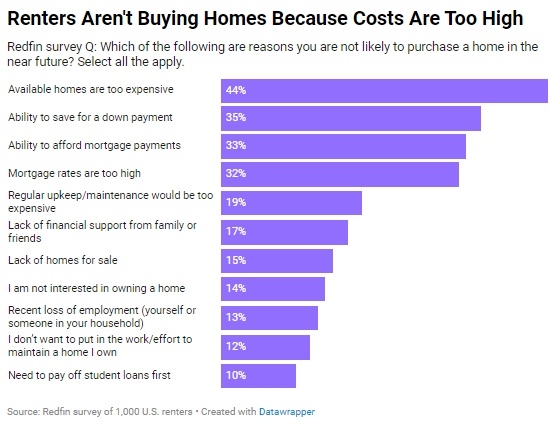Advertisement
Becoming an Involved Leader

"Be an industry leader; represent consumers’ right to the American Dream, and small business by being involved and contributing your ideas to your local and state legislators."
Defending your industry and the consumer's right to choose service providers means that you have to remain engaged in the advocacy and legislative/regulatory process, no matter what forces or trends are operating against you. Those of us in the mortgage loan originator (MLO) business, especially as independent brokers, have seen the tidal wave of blame, recriminations and the resultant flood of knee-jerk reaction legislation and new regulations overwhelm the market.
Starting with the Home Valuation Code of Conduct (HVCC), one regulation after another, layered on without considering the individual or cumulative effects, are causing the real estate market to fail to recover; causing further confusion among consumers, and creating unlimited liability for MLOs and lenders. When people get confused, they do nothing. We've all seen the statistics of how many potential first-time homebuyers are sitting on the sidelines, failing to take advantage of this historical juncture of the lowest rates ever, and depressed property values. Their fear of the security of their jobs in this economy is compounded by confusion of the mortgage process and extensive paperwork; with no clear assurance on the future value of owning a home.
For the first time ever, there are forces inside and outside of government questioning America's historic commitment to homeownership as the integral foundation of “The American Dream.” They say that there is nothing wrong being a life-long renter, and there are many people who just shouldn't own homes. "They" fail to say that when you're a renter, you're paying the landlord's mortgage; and that homeownership is the historically proven method for the 99 percent to build equity and savings over their lifetime. It is also not mentioned that individual homeownership has been critical to the economic advancement of African-Americans, Hispanics and other minorities in this country. Thankfully, this battle is still being waged, and "they" have not yet managed to prevail, and deprive Americans of their right to the American Dream.
This is where we in the mortgage origination industry should choose to stay high profile and be more engaged than ever. We are warriors defending the American Dream, and the rights of small businesses to survive as a viable consumer choice distribution channel against the marketplace and regulatory advantages of those entities that are “too big to fail.” We are out there in the streets every day, working and helping real people solve their problems and achieve their goals; no one knows the effects of the current economy and poorly-thought-out regulations have upon consumers and the real estate market better than us.
It is easy to become discouraged and feel helpless against the flood of recriminations and resultant regulations that has occurred over the past four years, but this is exactly what our adversaries want to have happen, so that we give up the fight and quietly go away. However, it is important to understand that the wheel has again turned, and that things have gotten so bad in the real estate market in most of the country without any apparent hope for improvement, that legislators are becoming much more receptive to ideas from industry veterans; recognizing that we are in the trenches every day, and that we know what works and what doesn't. Therefore, it is more important than ever to be engaged at every level of government, from city council to county supervisor to State Assembly and Senate to members of Congress. Remember, a famous man once said that all real estate, like politics, is local. It is impossible to underestimate the potential possibilities of establishing relationships with your local legislators, especially in these times of hyper communication. The marketplace and legislators are thirsty for positive input and good ideas. Be an industry leader, stay in the game, make sure your voice is heard as an industry expert who knows how it works; and be sure to contribute to the discussions of how to improve the real estate market.
To this end, I have written a bill designed to address all the loans that HARP 2.0 does not—adjustable-rate mortgages (ARMs) that are owned by other than Fannie Mae and Freddie Mac that are jumbos, monthly adjustables, Alt-A and sub-prime loans. In California, the majority of loans in the state are not owned by Fannie and Freddie, and most Californians are not helped by HARP 2.0. The bill is called the "Homeowners Relief and Home Retention Act of 2012" and appears below for your review and thoughts.
I have been around the legislative and bill-making arena for many years and harbor no illusions about the chances this bill has, or what the end product would look like. I also have no emotional investment in this bill, knowing it will be bent, spindled and slammed, and I will take no personal offense at that process. Obviously, I think the bill has a lot of merits to benefit both consumers and the banking industry (it doesn't require principal balance reduction or cramdowns); doesn't require any government money; and lowers the homeowners’ payments substantially for a five-year period, pumping much needed liquidity into homeowners’ hands. This bill is designed to stimulate serious discussion about doing something different to address the housing crisis, the situation is not improving by conventional thinking. To do things the same way and expect different results is the definition of insanity.
I have had discussions with several members of the California State Senate and Assembly about this bill, and they are very receptive to having it move through the bill creation and sponsorship process. Right now, this bill has been submitted to the California Association of Realtors (CAR) State Legislative Committee and on to their lobbying team for review, discussion and proposed sponsorship by CAR. We remain very optimistic about its chances, having gotten very good feedback on the idea.
Here is the bill in its current and original form as of April 2, 2012:
Homeowners Mortgage Relief and Home Retention Act of 2012
Summary-Situation Report
The economy continues to be stalled, unemployment remains stubbornly high and the real estate market has stabilized in some areas, but continues to deteriorate in others. Many homeowners are still distressed, causing more properties to go on the market at ever lower prices, to the point where more than half of homes for sale in any given area are short sales and foreclosures, with “regular” listings in the minority. Those who don’t have to sell, don’t, preferring to wait it out. Even those homeowners who are willing to hold on and wait it out in rapidly declining areas are losing hope, and considering walking from their properties.
So far, federal efforts to stem the housing crisis have done little if any good, to the frustration of homeowners and Congress alike, look at the Hope 4 Homeowners Program—announced with great fanfare in 2008, but with no net effect at all. President Barack Obama’s latest efforts, a re-working of his Administration’s Home Affordable Refinance Programs (HARP), HARP 2.0, will apply to only a minority of Californians whose loans are owned by Fannie Mae and Freddie Mac, it has been expanded to remove the loan-to-value (LTV) limits. It is estimated that nearly 60 percent of all the mortgage loans in California do not qualify under HARP 2.0, limiting the benefits and impact in the state. This estimated 60 percent consists of option ARMs, sub-prime loans (which are ARMs), and jumbo loans, most of which are either option ARMs or intermediate ARMs.
The American economy will continue to flounder until the housing market is stabilized and consumer confidence returns. Two things need to occur:
A) Stop the decline in property values by establishing stability in mortgage payments and returning a measure of affordability to existing homeowners, encouraging and enabling them to stay in their homes.
B) Establish credit liquidity into the market to enable and encourage first-time homebuyers to purchase the excess inventory of homes from homebuilders, foreclosures and short sales. Homes are more affordable than any time in the past 15 years, with the home affordability rate in California now at over the 60 percent mark, up from only 16 percent just five years ago. There is a pent up demand in young families looking to establish their households and families, whose twin problems are availability of downpayment and closing cost funds, and much tighter qualifying guidelines. The only low downpayment program available now for non-veterans is the FHA program; along with the Cal HFA program that is periodically available, but unreliable due to the state’s fiscal crisis. FHA has recently increased its downpayment requirement, and raised the mortgage insurance premium (MIP) fee as well, which it will be doing again twice more in 2012.
The FHA program has actually historically been of limited utility in California, with too low loan limits, which is large part of what caused the rise of sub-prime loans in the first place. The current management of FHA is very concerned for the safety and viability of the program, because its usage has increased more than 120 percent in the last year. The underwriting requirements have gotten more conservative, with requirements for higher credit scores as an example.
The search for a solution that will actually have an immediate and substantial impact is complicated by several factors. The first is that there is a rising tide of resentment by those homeowners who are impacted by their property values decreasing, yet are able to make their payments, and who feel that it is essentially unfair that people who purchased a home they couldn’t afford are getting bailed out and “rewarded” for their imprudent behavior, at the “prudent” buyers and general taxpayer’s expense. The second is how to accomplish this assistance without the U.S. Department of the Treasury expending additional hundreds of billions of dollars. The third is how to do this in a way that doesn’t cause irreparable damage to the future home finance marketplace by creating the precedent of forced principal balance reduction, which would place future mortgage investors in a position of uncertainty that their principal investment may be at risk. If this occurred, it would have the unfortunate effect of causing a huge rise in the cost of home loans to the consumer in the future, as investors would build in the higher perceived risk into the loan pricing.
So, a solution is necessary that accomplishes the following:
1. Addresses the needs of those homeowners that current and previous attempts have missed.
2. Doesn’t force a principal balance reduction on lenders/investors.
3. Reduces monthly payments to an affordable level.
4. Eliminates the excess risk levels in current and future ARMs.
5. Re-establishes consumer confidence and price and value stability, keeping people in their homes.
6. Creating confidence in first-time and other homebuyers to get them off the fence and into the market to reduce home inventory.
7. Provides stability in the home marketplace, protecting the remaining equity or value of homeowners, allowing them to stay in their homes until the market eventually returns to normal, as it always does. The real estate market, like the stock market, is cyclical but inexorably rises over the course of time.
Preface to the solution
The solution lies in the details and design of the ARM … how it works and the impact on the monthly payment. The ARM loan consists of two parts, the index and the (profit) margin. The index is that part of the loan that adjusts, and can be considered the cost of the lenders funds. The margin is what the lender adds to the index, and is the profit that is made on the loan. The margin is always a fixed figure. When the index and margin are added together, this is the actual interest rate of the loan. This is called “fully indexed rate,” “note rate” or “real rate of interest,” the definition depending on the lender, but the result is the same. All ARMs start with a subsidized rate lower than the fully indexed rate (“start rate,” “initial rate” or “teaser rate”) for a certain period of time, and over the course of time, all ARMs reach their full-indexed rate. Although the initial low start of the loan doesn’t pay the full amount due (the fully-indexed rate), the eventual rise of the rate to fully-indexed status ensures that the lender will eventually receive payment for both principal and interest, with the full loan amount and interest paid over the course of 30, or sometimes 40 years. ARMs have been in existence for approximately 30 years, with option ARM loans pioneered by World Savings, funded out of, and held in their own “portfolio,” who was bought out by Wachovia Bank, who in turn, was recently taken over by Wells Fargo, hence the origin of the “toxic loan portfolio.”
There are several popular indexes that lenders have used, depending upon if the loan has a negative amortization feature (option ARM), is a sub-prime loan, or an intermediate ARM (fixed P & I payment for a certain period). Generally, option ARMs have COFI, COSI, CODI or MTA as their indexes; sub-prime loans usually have LIBOR, and intermediate ARMs (both conforming and jumbo) have either six-month or one-year CMT or MTA (for current numerical values, see appendix). To these indexes, the lenders add their (profit) margins. Over the course of the last 15 years, the margins have been creeping up, unnoticed by consumers or regulators, with the option ARMs and especially the sub-prime loans having the highest margins. Option ARMs have margins as high as 3.5 percent, and sub-prime loans as high as five percent to six percent. This is the reason they were so popular to lenders and their investors—the high profit margins on each loan made them very lucrative. When these loans with high margins become fully-indexed, the rates are high, and payment shock results with a much higher payment than the initial start rate, which is the source of the trouble that consumers find themselves in.
The proposed solution
The key to immediately lowering the rates and payments of people who have ARMs, and preventing future excesses, lies in addressing the margins on ARMs with several proposals.
Section 1
I. ARM MANDATORY MARGIN REDUCTION PERIOD
Immediately reduce all ARM margins to 0.25 percent (quarter of a point) for everyone in California who has any ARM, for a five- or seven-year period, starting from the next monthly adjustment for those who have option ARMs, or in the case of people with intermediate ARMs (fixed for a certain period), for five years forward commencing upon the expiry date of the initial fixed period, whenever that may be, with the lender having no recourse to make up the lost margin income in either case. This would have the immediate impact of reducing interest rates by as much as 6.5 percent for sub-prime loans; 4.25 percent for option ARMs; and 3.5 percent for intermediate ARMs.
II. ESTABLISH THE ARM MARGIN HOMEOWNER CHOICE PROGRAM
Upon expiry of the five- or seven-year Margin Reduction Period, the homeowner would receive a statement from their loan servicer, with the following information and menu of choices:
►Current margin, current index rate and loan balance
►Three choices of margin rate: Continuing the 0.25 percent margin for another year; having a margin of one percent for one-year; or having the reduced full margin rate of 2.25 percent for one-year. If the consumer chooses either of the two reduced margins, the reduction of income to the loan servicer from the reduced margin income would be added to the loan balance payoff at the end of the loan. The choices allowed the consumer would give them the flexibility to keep their payment lower if still necessary after the initial three-year Margin Reduction Period.
III. PERMANENT REDUCTION OF MARGIN AND IMPOSITION OF A MAXIMUM MARGIN CAP
Impose a maximum margin of 2.25 percent on all new ARMs, and currently existing ARMs.
Results and effects of this solution
1. Upon passage of this Act, everyone who has an ARM loan would have their payment immediately reduced in half or more, not only because of reduction of margins, but also particularly because current indexes are very low due to the economic crisis. This would include homeowners not included in President Obama’s current plan, and those consumers not in trouble who may have been resentful of other efforts at mortgage relief—lower payment benefits for everyone, owner-occupied, second home, investment, conforming and jumbo.
2. Doesn’t force a principal balance reduction on loan servicers and investors, but removes their excessive profit margins fairly and permanently, while conversely eliminating the “toxic” aspect of the loan portfolios. This would be accomplished because of the newly restored ability of consumers to make their payments in a timely manner, loan delinquency ratios should decrease dramatically, thereby restoring the integrity of the loan portfolio held for servicing and improving the balance sheet of the institution holding the portfolio.
3. Offers a solution directly to the homeowner, creating perceived and real consumer empowerment, helping to offset the resentment created by the endless multi-billion dollar bailout of the banks and big corporations. It definitively helps “the little guy” by immediately lowering their payment, giving them the power to manage their loan more to their benefit and control, and re-establish neighborhood stability.
4. Neighborhood stability would be restored because homeowners would be able to afford their payments at least for the next five to seven years, providing the elusive foundation that the economy needs to recover from the current recession. Homeowners would stay in their homes, greatly reducing the number of distressed properties on the market, and halting the downward spiral on property values. This would have a greatly beneficial impact on neighbors, and local municipalities, whose tax bases are eroding with property tax revenues declining. It would also provide the confidence necessary to encourage first-time homebuyers and other “fence sitters” to get out and buy available properties, with the result of reducing current inventories, and further firming up property values.
5. The money saved every month by homeowners could be used by them to reduce their onerous credit card debt and other consumer debt, helping to avert the next looming credit crisis. Also, the monthly savings could be used to revive consumer spending on pent up demand for new cars, and other items, helping the economy to recover more quickly, since consumer spending accounts for 70 percent of the American economy.
APPENDIX
Table 1
Popular ARM Indexes, their October 2011 values; fully-indexed rates and payments with full margins for a $300,000 loan amount
Index
10/11 Values
Usual Margins
Fully-Indexed Rate
P & I Payment for a $300,000 Loan
One-Year CMT
0.12
2.75
2.87%
$1,243.88
Three-Year CMT
0.41
2.75
3.16%
$1,290.85
Five-Year CMT
0.99
2.75
3.74%
$1,387.65
12-Month MTA
2.02
2.75
4.77%
$1,568.56
Option ARM Indexes
Index
10/11 Values
Usual Margins
Fully-Indexed Rate
P & I Payment for a $300,000 Loan
COFI
1.27
3.5
4.77%
$1,568.56
CODI
0.2758
3.5
3.78%
$1,394.46
Sub-Prime ARM Indexes
Index
10/11 Values
Usual Margins
Fully-Indexed Rate
P & I Payment for a $300,000 Loan
Six-Month LIBOR
0.400
5.5
5.90%
$1,779.41
One-Year LIBOR
0.72
5.5
6.22%
$1,841.30
Table 2
The same indexes with the proposed reduced margins fully-indexed rate, and resulting lower P & I payments
Index
Values
Reduced Margins
New Lower Interest Rate
New P&I
Monthly Savings
One-Year CMT
0.12
0.25
0.37%
$880.57
$363.31
Three-Year CMT
0.41
0.25
0.66%
$918.78
$372.07
Five-Year CMT
0.99
0.25
1.24%
$998.35
$389.30
12-Month MTA
2.02
0.25
2.27%
$1,149.80
$418.76
Option ARM Indexes
Index
Values
Reduced Margins
New Lower Interest Rate
New P&I
Monthly Savings
COFI
1.276
0.25
1.53%
$1,039.68
$528.88
CODI
0.276
0.25
0.526%
$900.99
$493.47
Sub-Prime Loan Indexes
Index
Values
Reduced Margins
New Lower Interest Rate
New P&I
Monthly Savings
Six-Month LIBOR
0.400
0.25
0.65%
$917.45
$861.96
One-Year LIBOR
0.720
0.25
0.97%
$960.79
$880.51
These tables clearly indicate the very substantial benefit to the homeowner in monthly payment reductions resulting from reducing the profit margins on ARMs.
George L. Duarte, MBA, CMC, CRB, CG-REP is president/broker/REALTOR with California-based Elite Real Estate Properties/Horizon Financial Associates. He may be reached by phone at (510) 377-9059 or e-mail [email protected].
About the author





